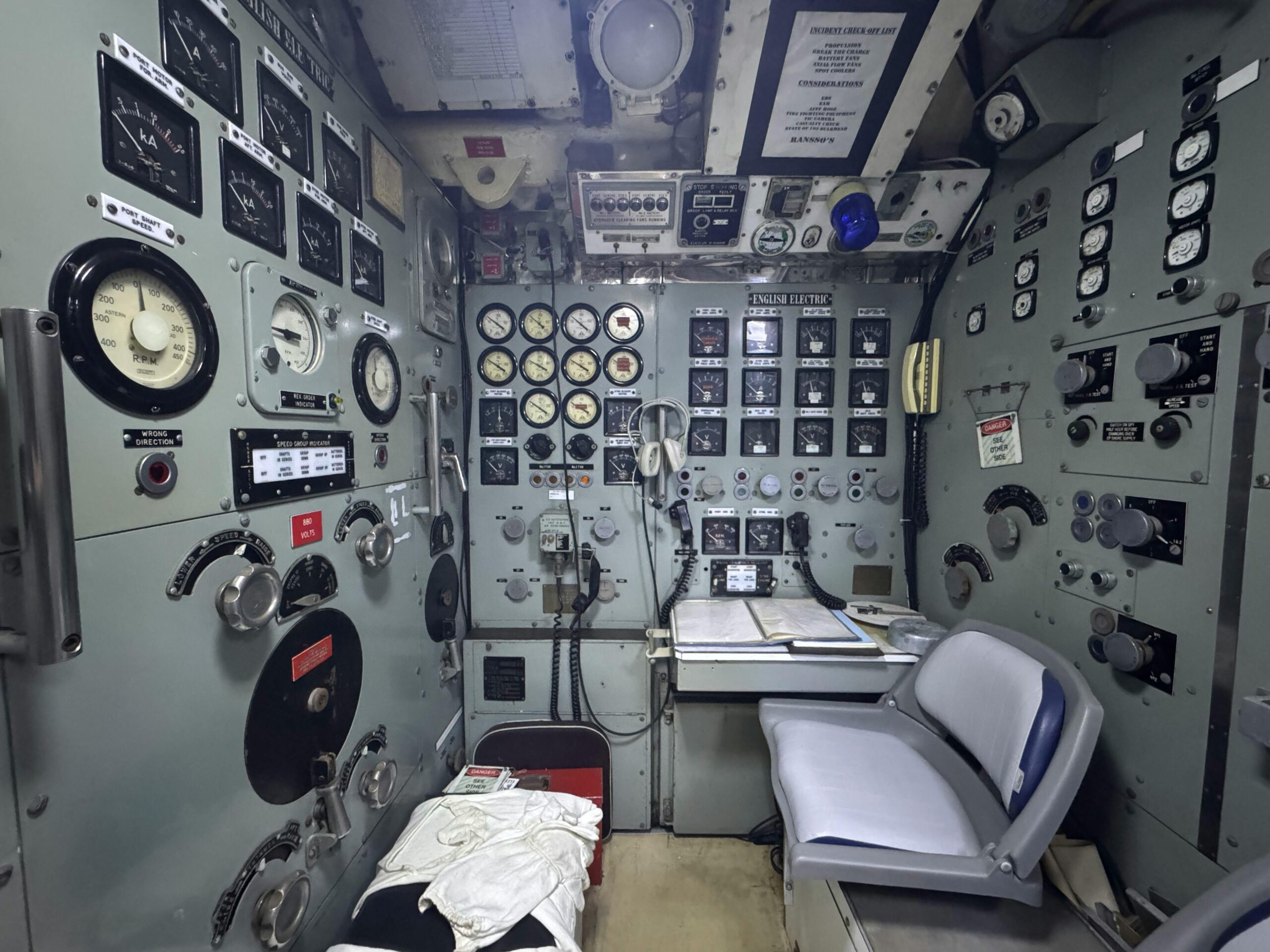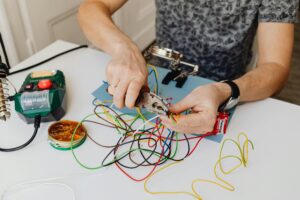Introduction: The Rise of Collaborative AI Agents
Consider a future in which the software in which you manage your marketing chatters with the sales dashboard, your project tracker, and even fires a customer email with no human contact.
This is not automation alone. It is cooperation of several intelligent agents.
The multi-agent systems (MAS) are one of the transformational changes revolutionizing the functions of teams in businesses in 2025. Not only are AI agents taking over tasks across a company, in engineering, marketing, finance, and HR, they are working as virtual partners.
This article goes much deeper and explores the cross-team collaboration that is facilitated through artificial intelligence, real-life examples, applications, tools and the future of the technology that facilitates cross team collaboration enabled by artificial intelligence.
.
Table of Contents
-
What Are Multi-Agent Systems?
-
From Single AI to Agent Teams: What Changed?
-
Why Multi-Agent Systems Matter for Collaboration
-
How MAS Work Across Departments
-
Real-World Example: Marketing Meets Product Development
-
Top Tools Enabling Multi-Agent Collaboration
-
Use Cases by Industry
-
Benefits of AI Agent Collaboration
-
Challenges and Limitations
-
The Future of Agent Collaboration
-
Final Thoughts: Are We Building Digital Coworkers?
1. What Are Multi-Agent Systems?
Multi-agent systems (MAS) Multi-agent systems Multi-agent systems (MAS) are sets of separate and independent AI agents that communicate and collaborate together to accomplish complex tasks.
Each “agent”:
Possesses knowledge, memory and decision making ability of its own
Able to talk to other agents
Tends toward an end (personal or collective)
Imagine MAS as a group of specialists, but instead of humans, you have AI bots who are domain experts in one field or another (i.e. a research agent, a design agent, a planning agent).
2. From Single AI to Agent Teams: What Changed?
Early on the AI process was basically a one-to-one process: You ask, AI responds (like ChatGPT).
However, the work today is more complicated. Thus, instead of there being a single, we are witnessing collectives of agents which:
They will share duties with each other
Participate in dissemination of findings or results
Activate the actions in response to the output of another agent
The change in focus in AI to go from the linear to collaborative model is driving the next wave of smart workflows.
.
3. Why Multi-Agent Systems Matter for Collaboration
The modern businesses depend on:
Cross-functional teams
Fast decision-making
Sharing of data in real-time
MAS present this human collaboration in digital form.
For example:
Budgets could be projected by the finance agent
A marketing agent might alter the campaigns according to that forecast
Features were at the disposal of a product agent to focus on
And none with human micromanagement.
4. How MAS Work Across Departments
The following can be considered an example of how agents can collaborate across teams:
Scenario: Introduction of a New Product
Research Agent searches trends in the market and proposes hot issues.
Design agent develops mockups on research results.
Marketing Agent prepares shapes and plans of advertising.
New pricing are updated to the CRM by Sales Agent.
Finance Agent figures out the cost and ROI.
Operations Agent verifies whether the inventory and logistics are possible.
Every agent does the updating of a shared database or emits signals to fellow agents. When one fails, other adapt.
That is simultaneous, inter-departmental AI cooperation.
5. Real-World Example: Marketing Meets Product Development
Imagine that your firm is developing a novel fitness tracker.
Market Analysis Agent discovers that Gen Z favours wearables that are friendly to the environment.
One of the solutions proposed by a Product Design Agent is recycled materials.
A Campaign Agent composes an ad campaign that is sustainability-driven.
A Pricing Agent tries optimization by operating simulations.
All of this is happening without Slack messages, chains of emails, and exhausting Zoom.
Hello to AI-to-AI, Zero friction collaboration.
6. Top Tools Enabling Multi-Agent Collaboration in 2025
Here are the platforms pushing MAS forward:
| Tool | Use Case |
|---|---|
| Auto-GPT | Autonomous task-solving using GPT models |
| BabyAGI | Goal-oriented agent workflows |
| SuperAGI | Industrial-scale multi-agent deployment |
| AgentVerse | Sandbox for agents to interact |
| LangGraph | Framework for building agent teams |
| Flowise AI | No-code visual agent orchestration |
| CrewAI | Defines AI agent roles and team structures |
These tools allow agents to communicate, reason, and adapt, just like human teams.
7. Use Cases by Industry
Corporate Teams
Marketing agents act along with sales and analytics agents to refine campaigns.
👩⚕️ Healthcare
The diagnosis agents collaborate with the treatment agents and record-keeping agents to accelerate the process of taking care of patients.
🛒 eCommerce
The product representatives communicate with pricing and advertising representatives to maximise listings in real time.
🏭 Manufacturing
Supply chain agents, maintenance agents, and inventory agents work together so as to eliminate downtimes.
📚 Education
Depending on the performance of the students, curriculum agents collaborate with personalization agents to adapt learning paths.
8. Benefits of Multi-Agent Collaboration
Quicker Operation
AI agents do not wait to go on a meeting. Operations pass directly between the operations.
Improved Decision-making
Every agent has its own intelligence – producing stronger group decisions.
✅ Scalability
Up the number of agents in order to scale, rather than the number of people.
Real-time Adaptability
Agents are watching data on the run and are shifting strategies on the fly.
Minimised Human Bottlenecks
MAS limits the relying on approval or the availability of the human.
9. Challenges and Limitations
Between the MAS, they are not flawless.
Communicating issues
Agents can have a misinterpretation of signals or data resulting into workflow failures.
No Context
There would be no human control to give the agents the context of thought culturally, emotionally, or business-specific.
Security Risk
The communication between the agents should also be safe so that it does not leak information or be interfered with by other malicious individuals.
Complexity of Debugging
Energizing to know the specific agent who wronged you may be to follow a bug in a deep table code base.
This is the reason why human-in-the-loop design remains essential.
10. The Future of Multi-Agent Collaboration
This is the direction that MAS is moving toward:
SaaS AI Teams
It will allow you to be able to subscribe to an app equipped with a virtual team of agents in just the same way you would book yourself.
Emotional Intelligence
Agents will begin to comprehend not only the logic but, emotion and tone and the teamwork that occurs as a result will be smarter and more empathetic.
International cooperation
Consider, a research agent in Tokyo working face-time with a strategy agent in London and a dev agent in Bangalore with neither time zones nor language boundaries.
The Plug-and-Play Agents
With custom APIs, you will be able to consume an agent such as a browser extension, a finance one today, a design one tomorrow.
The AI team of tomorrow will be able to fluid and dynamic like what your business requires.
11. Final Thoughts: Are We Building Digital Coworkers?
The boundary between man and machine cooperation is becoming so erased.
We are no longer asking AI to help us out. By having MAS we are giving them freedom to collaborate with each other, to learn with each other, and with problem-solving across teams.
Do they work together? In a great many respects–yes.
There are no coffee breaks, they do not forget instructions and they can grow without any overheads.
However, as any team, they require:
Direction (clear goals)
Safe limits (governance)
Communication (prompt engineering)
By doing this correctly, multi-agent systems will not substitute teams; it will compose a part of a team.
It does not matter whether you are in the startup world, a corporate leader, or a curious developer, now it is time to start to think in terms of teams of people + AI.
Since teamwork is no longer a human affair.
12. Real-World Case Study: Multi-Agent System in a SaaS Startup
Suppose we have a rapidly-growing SaaS start up- we will name it as GrowFlow that sells CRM software.
The Challenge
Internal connectivity within the product, marketing, sales and support teams was disorganized as they grew. There were different tools, spreadsheets, and analytics that were applied to every department. It had slow response time and monthly delays to launch new features.
The AI Solution Multi-Agent Architecture
GrowFlow implemented a multi-agent environment and applied the following types of specialized agent:
Insight Agent – – Drew user activity towards the product analytics (Mixpanel, Segment).
Support Agent – Summarized user complaints of Zendesk tickets.
Marketing Agent – Composed email programs and in-app communication with GPT.
Sales Agent- Segmented what features were turning out trials to paid.
Product Agent – Recommended features on the basis of the above inputs to pursue.
These agents communicated with the other via a common message queue and vector database. Each week, they produced a dashboard and a to-do plan that offered a solution of what to do and the team just needed to accept or make adjustments.
The Outcome
The process of planning the product sprints was automated weekly
Creative email marketing was done and customized
In real-time pain points of users were flagged
Less than 3 months of incorporation of MAS, GrowFlow succeeded in gaining enhanced user activity by 31% and minimized support ticket backlog by 42%.
13. Behind the Scenes: How Agents Talk to Each Other
The magic of MAS is in communication.
The usual ways in which agents either interact or may interact are:
1. Shared Memory ( Vector DBs)
Such tools as Pinecone, Weaviate, or Chroma enable agents to store and retrieve knowledge in the manner of a team wiki.
2. Pub/Sub Channels
Agents could broadcast updates on such systems as Redis, RabbitMQ or LangGraph. Other voters have the option of subscribing to topics of their interest (e.g. marketing-feedback).
3. Goal-Driven Dialogue
Every agent has a plan of tasks or goals. Upon completing a task it may:
New agent success message
Updates in log on shared memory
Initiate workflow of another agent (with help of Zapier, Make.com or LangChain)
This spins an efficient, smart working flow among agents such as a virtual assembly line.
14. Ethical Considerations of MAS in Team Collaboration
The advantages of MAS are enormous, but ethical issues need to be raised by the organization:
⚠️ Transparency
In what way can you find out why an AI agent made a decision?
MAS behavior is covered by such “black-box”, causing problems of accountability.
Job Displacement
MAS will be able to automate the activities of the team, which may eliminate human intervention.
Organizations have to retrain and redeploy human employees to monitor positions.
Prejudice & Justice
When one of the agents is trained with biased data this might have an effect on the overall MAS.
Hypothetical case: When a hiring agent has bias toward some resumes, it could be misleading to the HR.
⚠️ Privacy
Strict compliance should be observed by agents of financial or medical information (GDPR, HIPAA, etc.).
Solution: Whenever MAS is deployed into industrial or customer-facing areas ensure there is a human-in-the-loop check.
15. Human + AI Collaboration: Not a Replacement — an Upgrade
There’s a growing misconception that multi-agent systems will replace human teams entirely. In truth, the most effective systems are hybrid:
| Human Role | AI Agent Role |
|---|---|
| Strategy | Execution |
| Creativity | Pattern Recognition |
| Decision Approval | Task Proposal |
| Empathy | Data Analysis |
| Exception Handling | Repetitive Work |
Think of MAS as junior team members. They can handle the grunt work and leave room for humans to focus on what they do best: insight, intuition, and innovation.
16. How Multi-Agent Systems Will Evolve by 2026 and Beyond
These are some of the trends as well as innovations we may expect in next 12-24 months:
Voice-enabled MAS
Agents will get a task over the phone (e.g. Plan the content calendar for this week) and only update on the same.
Modular Agent Markets
The thought of looking up and subscribing to readymade agents: a design agent, a compliance agent, a trend-spotting agent as SaaS apps is easy.
Agent Fusion between Firms
Consider the B2B ecospheres where an agent within a firm could interact in a secure way with agents within a partner firm to negotiate contracts or to exchange inventory data.
Personality Enriched Agents
The individual agents will embody certain characteristics (e.g., risk-taking, analytical, empathetic) so that the teams of AIs can do or sound more human and be simpler to communicate with.
17. Multi-Agent Systems in Open-Source Communities
The open-source movement is thriving with MAS experimentation. Here are some of the most promising projects:
| Project | Description |
|---|---|
| Auto-GPT | One of the first MAS prototypes using GPT-4 |
| BabyAGI | Lightweight framework for goal-driven task agents |
| LangGraph | Visual + code-based framework for orchestrating agents |
| SuperAGI | Full-stack MAS for business automation |
| CrewAI | Defines agents with job roles, memory, and responsibilities |
Open-source MAS are ideal for:
-
Developers
-
Researchers
-
Indie hackers
-
Startups who want to test AI-powered automation affordably
18. Tips for Teams Looking to Adopt MAS
- And here are the smart ways to intent MAS integration before you make a leap:Begin with Little
Select a single process (e.g., weekly reporting)
Automate and make it ready with 2-3 basic agents
Role clarification
There has to be a different role per agent (such as team members)
Sandbox First
To test flows, you can use such platforms as AgentVerse, Flowise, or AgentGPT
Record all Communications
Keep logs in order to know how the agents act and make decisions
Escalation plan
When something does not work, looping should send an alarm to a human, instead of looping
19. FAQs: Multi-Agent Systems in Team Collaboration
Q1. What’s the difference between a multi-agent system and simple automation?
Automation follows a fixed rule. MAS uses autonomous AI agents that can plan, adapt, and collaborate dynamically — like human coworkers.
Q2. Do I need to be a developer to use MAS?
Not anymore! Tools like Flowise, AgentGPT, and CrewAI offer no-code or low-code experiences. But some technical guidance helps if you’re integrating with APIs or databases.
Q3. How many agents does a typical MAS need?
You can start with just 2–3 agents. A mature MAS might have 5–10 agents, each handling part of a workflow (e.g., data, writing, outreach, reporting).
Q4. Is it safe to let agents talk to each other unsupervised?
For critical operations, human-in-the-loop is essential. But for routine or low-risk tasks, autonomous MAS can operate safely with constraints.
Q5. Will multi-agent systems replace human teams?
No — they’ll augment them. The future is human-AI hybrid teams, where MAS handle repetitive, data-heavy tasks while humans lead, review, and innovate.
20. Conclusion: A New Era of Intelligent Teamwork
Multi-agent systems are changing the way we think about collaboration — not just between humans, but between machines and humans working side by side.
They bring:
-
Speed without burnout
-
Intelligence without bias (when designed properly)
-
Scalability without growing payroll
Whether you’re a startup founder, project manager, or AI enthusiast — now’s the time to explore, experiment, and evolve with MAS.
By giving your business its first AI team, you’re not just future-proofing operations — you’re opening the door to a world where collaboration knows no limits.





